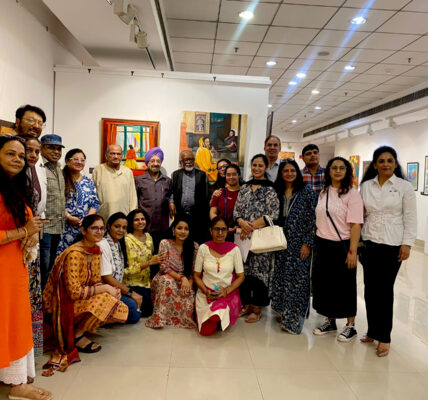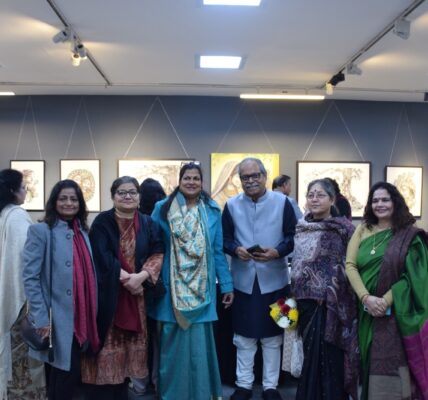Kanwal Dhaliwal: Back to the Roots

Kanwal Dhaliwal, is a versatile personality- a painter, sculptor, writer, translator, and a linguist, was born in 1960 in rural Malwa region of Punjab, India, now resides in London. He has worked in almost every medium such as oil, watercolor, clay, wood, stone and many more. For instance, for his petite sculptures he used stones, collected from river Raavi while working in Chamba (H. P.) as an Art Teacher in Navodya Vidyalaya. To express his emotional connections with the land of his birth, he has worked on various series right from his art college days in Chandigarh, when he painted ‘The Window’. Even after leaving the country and immigrating to United Kingdom in mid-nineties, leaving his family and friends behind; uprooted from his natural roots, shifted to a new country to embark on a new life, a sudden change in his subjects can be seen, although the themes of earlier series kept on visiting his later works.
In his series ‘The Village’ (1985-95) Kanwal Dhaliwal captures the essence of rural life through drawings and sculptures, celebrating the authenticity and resilience of village life.

Through his keen artistic lens, Dhaliwal delicately portrays the lives of villagers- both men and women, engaged in the myriad activities that define their existence, from the serene farmlands to the poignant scenes of mourning, and the bustling law-courts, to intimate courtyards adorned with folk motifs. The artist pays homage to the cultural richness embedded in these communities by incorporating traditional architecture and folk motifs in his sculptures as well.
In the series ‘The Roots’ (2001 onwards) he explores the reality of immigration through drawings and paintings. Here he skilfully captures the essence of the immigrant experience by employing a powerful metaphor- the separation of a tree from its roots. The individual immigrant, embodied by the tree, is depicted in a state of detachment from their cultural and familial origins. The juxtaposition of the solitary tree against the dynamic urban landscape serves as a stark commentary on the immigrant experience. The city becomes both a witness to and a backdrop for the unfolding narrative, representing the challenges and opportunities presented by the new environment. Dhaliwal’s use of color and symbolism masterly conveys the emotional journey, highlighting the tension between cultural continuity and the allure of a new life. The Roots serve as a reflection of his personal journey and resonates with the contemplation on the sacrifices made, the evolving sense of self, and the ever-present tension between embracing change and preserving one’s roots.

‘The Valiant Ones’ is a powerful series (2008 onwards) where Kanwal Dhaliwal pays homage to unsung or lesser-known heroes of Indian subcontinent (and later Britain too) through striking portraits. Portraits of Gaihal Singh Chhajjalwadi, Madam Cama, Saadat Hasan Manto, Kartar Singh Sarabha, Khudiram Bose, Lal Singh Dil and Professor Lali are included in this show. The series is not just a collection of portraits but a visual symphony that harmonizes the courage, resilience, and unyielding spirit of these valiant individuals. ‘The Partition’- another theme close to his heart manifests in the portraits of Chhajjalwadi and Manto. Meticulously crafted, each portrait captures the physical likeness and incorporates symbolic elements that delve into the essence of each character’s contribution to the larger narrative of social change and resistance.
Collectively, these series showcase Kanwal Dhaliwal’s ability to weave compelling visual narratives that go beyond artistic representation, becoming reflective mirrors of the rich tapestry of experience, resilience, and courage.





